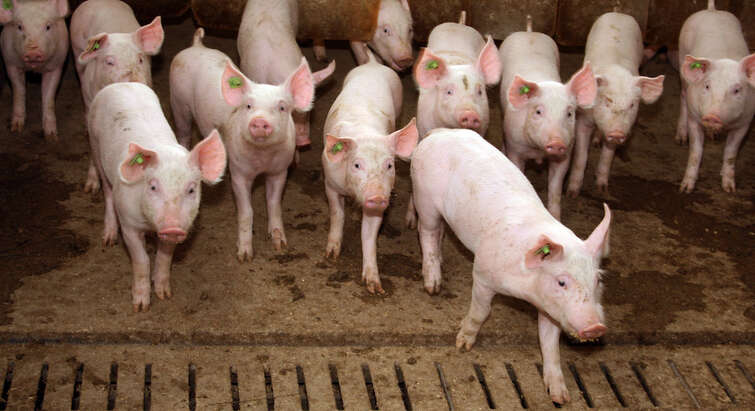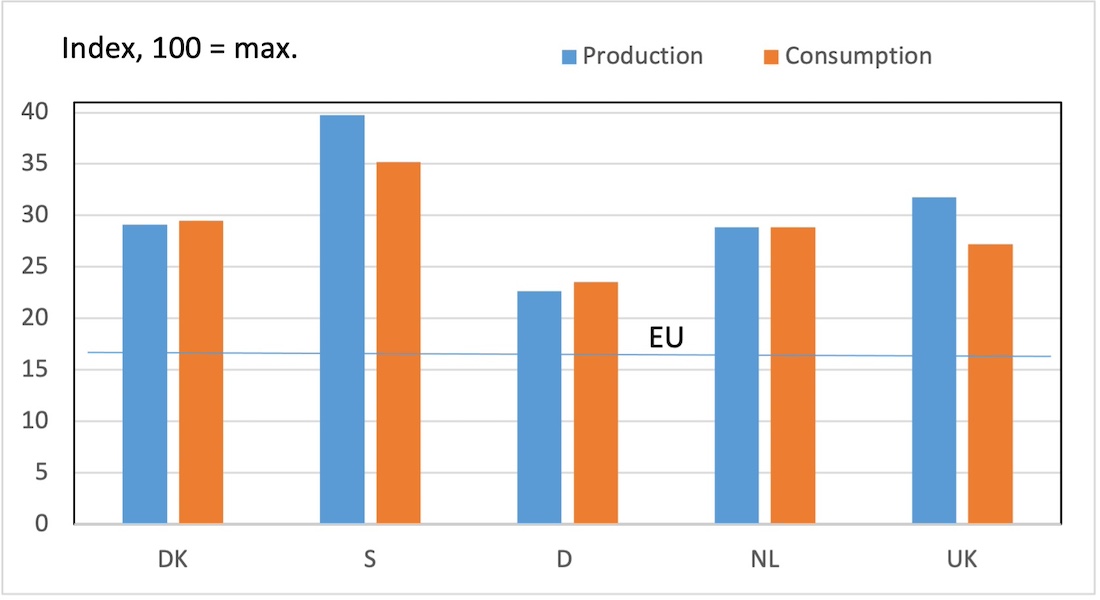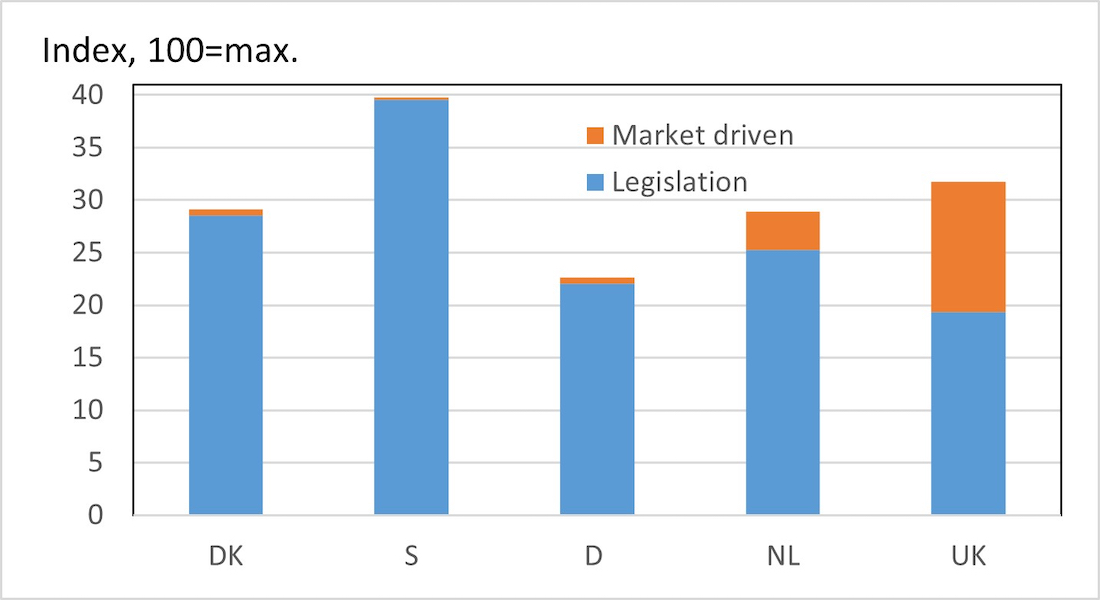
Benchmark for pigs 2022
 Most important messages from the figure
Most important messages from the figure
- There are major cross-country differences in opportunities for good welfare offered to pigs. Denmark is placed in the middle alongside the Netherlands and the United Kingdom of Great Britain and Northern Ireland (UK), while Germany is lower, and Sweden is placed in the top in relation to animal welfare in national production.
- The consumers’ choice of products evens out differences related to national production, e.g. based on high national legal demands. This is seen most clearly in Sweden and the UK where high legal demands (in the case of Sweden) or high standards in practice (in the case of the UK) are partially counterbalanced by large imports of pork.
Here you can read more about the Benchmark method.
Further explanation of the results
For each country there is a Benchmark value for both national production and national consumption. The two values may differ since pork is also both exported and imported. To name an example, Denmark has a slightly higher Benchmark value for consumption than for production. This is due to the fact that most of the pork exported from Denmark is produced based on basic legal requirements for animal welfare, while most of the pork produced based on welfare requirements that go beyond the legal minimum is sold on the home market. The positive effect on the Benchmark value for welfare pigs sold on the home market, however, to some extend counteracted by the imports of pork produced in accordance with the EU minimum requirements.
The horizontal line in the figure indicates the minimum requirements for pig welfare as defined by the EU. These are stated in an EU directive with minimum requirements for animal welfare that must be implemented in each member country’s national animal welfare legislation. If a country has produced pork with a higher Benchmark value compared to the EU’s minimal requirements for pig welfare, there may be two possible explanations:
- Firstly, the country may have more demanding national animal welfare legislation than required by the EU. This is particularly true for Sweden where the higher Benchmark value for national production is mainly due to stricter national legislation. In 2022, this was also partially true for Denmark where the demands of the national animal welfare legislation are slightly higher than required by the EU. Higher demands are on their way in German legislation but were not yet implemented in 2022.
- Secondly, there may be speciality pork production of which a large part is sold with an animal welfare label. These can make a significant difference to the Benchmark value. As an example, a Danish standard pig has a Benchmark value of 28.6, whereas a pig produced with three hearts according to the heart scheme of the Danish Veterinary and Food Administration has a Benchmark value of 47.5. Among other things, this is a result of the requirements regarding free-range management, loose-housed sows, more space, no exemption from provision of nesting material, weaning no earlier than after 28 days, intact tails, initiatives preventing tail biting, and floor bedding (the highest achievable score in the light of the experts’ assessment of the presented possibilities is 75.1).
The Benchmark values for 2022 cannot be directly compared to the values for 2021 due to the inclusion of more factors in the updated valuation. When comparing Benchmark values for 2022 to the values from previous years, the increase in the Danish and Dutch scores is not so much caused by changes in production, but primarily by changes in the factors included in the updated valuation. To provide an example of this, three elements in Danish legislation (requirements about showering slaughter pigs and sows during periods of high temperatures and about sties for sick pigs as well as a ban against the use of electric driving rods in slaughterhouses) have resulted in an increased Benchmark for production in Denmark.
Further explanation of the results with a focus on Denmark
Denmark is placed in the middle alongside the Netherlands and the UK, while Germany is placed in the bottom and Sweden at the top.
When comparing Sweden and Denmark, the difference is caused by the fact that Sweden has an extensive legislation, including requirements about loose housing of sows except from a couple of days after farrowing and about space and straw for slaughter pigs as well as a ban against tail docking. The contrast is somewhat smaller with regards to consumption, since Sweden imports a large amount of pork produced in countries with less strict animal welfare requirements.
When comparing Denmark and the UK, the explanation as to why the country is placed in the middle when it comes to production is not to be found in the legislation, but rather in the fact that a large part of the country’s national pig production is based on sows being kept outdoors. On the other hand, the Benchmark value for pork consumption is lower, since around half the consumption in the UK in 2022 was based on imports.
Compared to the Netherlands, which like Denmark has a large, export-oriented pig production, there are various explanations as to why the countries are almost aligned. In Denmark, the Benchmark value is primarily driven by legislation, while the Netherlands have built a home market based on a well established cooperation between animal welfare NGOs, the pig industry and the retail industry. Consequently, all fresh pork sold in Dutch super markets is equipped with an animal welfare label.
Denmark is clearly placed above Germany, but it may only be a matter of time before Germany overtakes Denmark, as more demanding animal welfare legislation has been enacted by the German government and will be gradually implemented.
This figure shows the degree to which market-driven as well as legislative initiatives impact animal welfare in production in each country:

Limitations
As with all other methods for making wider comparisons of animal welfare, the Benchmark method has several general limitations. The most important of these are described under the Benchmark method.
Recent publications: Benchmarking pigs

